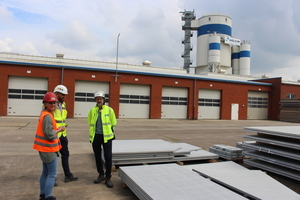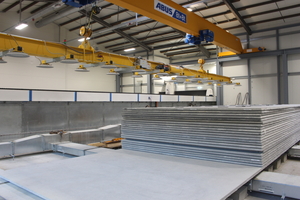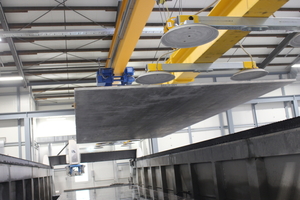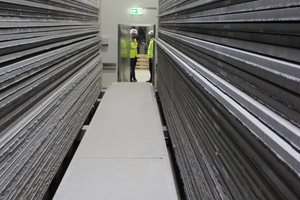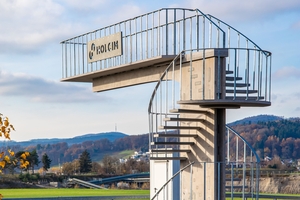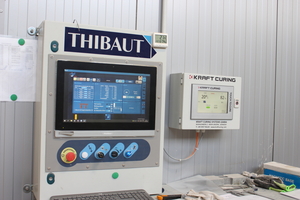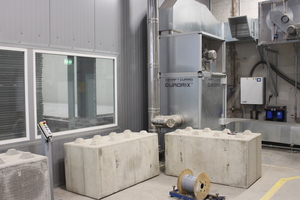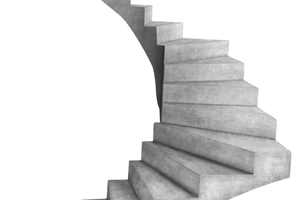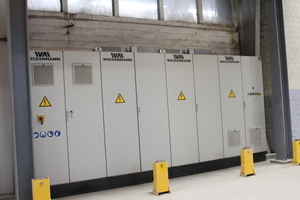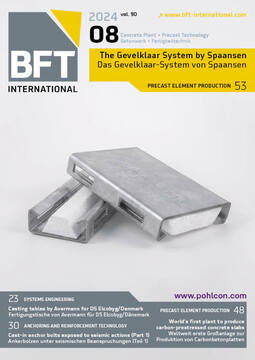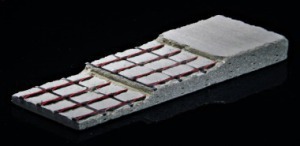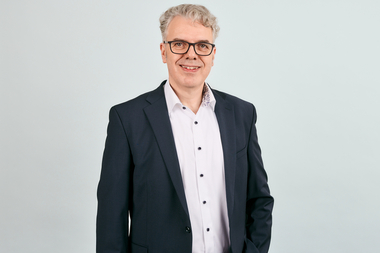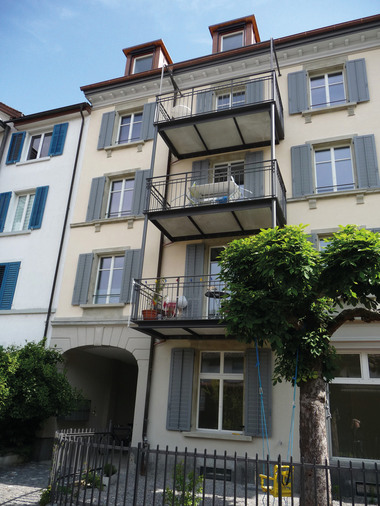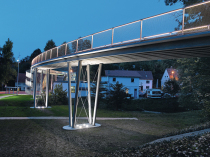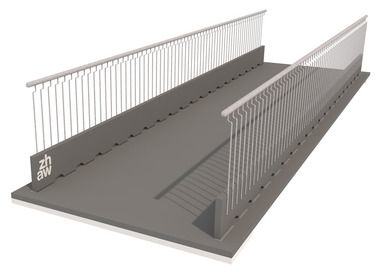World’s first ultra-modern large-scale plant to produce carbon-prestressed concrete slabs
Holcim’s precast presence previously relied on the long-established Vetra brand primarily serving north-western Germany. Last year, the new Holcim Fertigteile brand was launched instead to mark the emergence of an innovative unit within Holcim Deutschland Group that consistently focuses on sustainable construction.
Holcim Fertigteile is a Hamburg-based wholly owned subsidiary of Holcim (Deutschland) GmbH, one of Germany’s leading building material producers. Holcim Fertigteile’s core business includes the production and sale of custom high-quality precast elements for the industrial, residential, and agricultural sectors, as well as custom solutions for specific projects. Employing about 200 people, Holcim Fertigteile is firmly rooted in its home region while also doing business internationally. Customers in Germany and abroad are supplied from the company’s production sites in north-western Lower Saxony.
Holcim’s precast presence previously relied on the long-established Vetra brand primarily serving north-western Germany. Last year, the new Holcim Fertigteile brand was launched instead to mark the emergence of an innovative unit within the Holcim Germany Group that consistently focuses on sustainable construction. The new brand also includes a new logo and design.
The renaming also underscores the affiliation with the parent entity, Holcim Germany, a dynamic and agile market leader that takes special responsibility for the sustainable use of resources and the closing of material cycles. Holcim Fertigteile challenges the status quo and paves the way for state-of-the-art concrete solutions and innovations in the concrete industry. Precast elements are produced in factories where top-class manual work meets ultra-modern, semi-automated production lines.
Large-scale plant commissioned to produce carbon-prestressed concrete slabs
Holcim’s mission is to build more while driving down material consumption. A prime example of this approach are the innovative carbon-prestressed concrete (CPC) elements, which not only save substantial amounts of material but also significantly reduce the associated carbon footprint. Holcim Fertigteil Werk in Essen (Oldenburg), Lower Saxony, has recently commissioned the world’s first ultra-modern large-scale plant for producing CPC slabs, according to the supplier. Several equipment manufacturers and suppliers were involved in this plant upgrade, including Weckenmann, Liebherr Mischtechnik, Kraft Curing, Thibaut, Softbauware, Unitechnik, Probst, and Nevoga.
Precast elements have been material-efficient ever since they were first launched. Innovative approaches help scale up these beneficial effects, which are best exemplified by the carbon-prestressed concrete (CPC) elements that Holcim has been producing since 2022. The new product won the Innovation Award at bauma, the world’s leading trade show for construction equipment and technology, showing that the precast market is on the move and offers immense potential for transforming construction. The high-performance, extremely thin concrete slabs enable material savings of up to 80% compared to steel-reinforced components while reducing the carbon footprint by up to 75%. In Germany, the first national technical approval for carbon-prestressed concrete was granted at the end of 2021, allowing for the widespread use of these resource-efficient, climate-friendly precast components. This approval includes a complete structural design of the CPC slabs, which can be used to customize a wide range of components, such as stair treads, balcony slabs, and exterior wall claddings. Modular bridges can also be designed effortlessly and resource-efficiently using CPC slabs.
“We receive inquiries for CPC elements from Germany and across the world – from the UK to Australia – almost every day. This shows how the business is changing, and it’s thus the right time to broaden the brand’s reach,” says Stefan Gramberg, Managing Director of Holcim Fertigteile.
The development was carried out by CPC AG in collaboration with the ZHAW (Zurich University of Applied Sciences). The cooperation includes the market launch and further optimization of the design. Large-scale serial production takes place at Holcim in Germany. “This exclusive cooperation with Holcim enables us to penetrate a significantly larger market with these innovative, thin precast elements,” explains Prof. Josef Kurath, member of the Board of Directors of CPC AG.
The future belongs to CPC elements
Holcim Fertigteile operates its headquarters in Neermoor in the northern German region of East Frisia, where the second production site besides the Essen plant (near Oldenburg) is located. There are also 2 associated precast concrete plants in the Netherlands, where special systems for coastal and flood protection are produced in Alphen. In 2022, the new site was converted into the first ultra-modern CPC plant operating on a large industrial scale, as described above. In addition to the CPC elements, standard precast elements such as walls, ceilings, stairs, balconies, container elements (biogas plants), columns, beams and girders as well as other precast concrete elements for industry and agriculture are produced.
“The future belongs to CPC elements, even though the start of these resource-efficient components is still somewhat slow. This is because most projects today include custom uses that need to be considered as early as in the design phase. Our production capacity currently amounts to about 45,000 m² and can be increased further to 100,000 m². However, there are also standard applications such as balconies and bridges where synergies can be utilized through modular construction, which will also reduce costs. There are already products and initial applications in this field,” continues Stefan Gramberg. “Another focus will be on digitalization. Only through consistent digital planning can we discuss life cycle costs and sustainability of construction systems with investors. A digital twin is also essential for digital approval processes and the digital construction file, which includes a list of the building materials used.”
Plant test run using steel fibers to drive down carbon emissions
Last year, tests were conducted at Holcim Fertigteile to examine standard components of the production portfolio with the aim to optimize their carbon footprint. For this purpose, the complete set of parameters of a half-spiral staircase from standard production was taken as a reference. The reference component featured conventional steel rebar and mesh reinforcement, but the structural performance of the staircase remained the same.
In the first test, a low-carbon stair was produced using combined reinforcement. The amount of added Stabils steel fibers supplied by Bilstein Steel Fiber (SB 60/70 - 2000) reached 30 kg/m³. Steel fiber addition made it possible to reduce conventional reinforcement by approximately 120 kg (equivalent to about 65%) for the entire component. Yet it was also possible to save on concrete as the amount of concrete required was reduced by about 25%. The CO2-reduced staircase was manufactured using a concrete with a higher compressive strength. However, this is also CO2-reduced compared to the original formulation due to the use of a CO2-reduced cement.
In addition to material savings, the time required for installing the reinforcement was also shortened significantly by 80 to 90% since the installation of conventional reinforcement was kept to a minimum and the steel fibers were integrated into the component during concrete pouring. Compared to the reference mix, pouring of the steel fiber reinforced concrete was an effortless process that required no additional time. The steel fibers used in this case were 60 mm long. The total weight of the low-carbon stair was significantly lower than that of the reference, saving about 23%.
Stefan Gramberg concludes: “At Holcim Fertigteile, as well as at our parent, we are working hard to reduce the carbon footprint of the construction of tomorrow. In precast element production, we pursue this approach in the design phase and by targeted selection of raw materials. The stair component provided the perfect opportunity to compare the conventional approach with an innovative, sustainable concept. Using steel fibers enables us to significantly reduce the amount of both steel and concrete. Consequently, we achieve the same component performance level while reducing raw material consumption, and we generally consider our business to be perfectly prepared for the future.”
CONTACT
Holcim Fertigteile GmbH
Industriestr. 6
26802 Neermoor/Germany
+49 49549283-10

